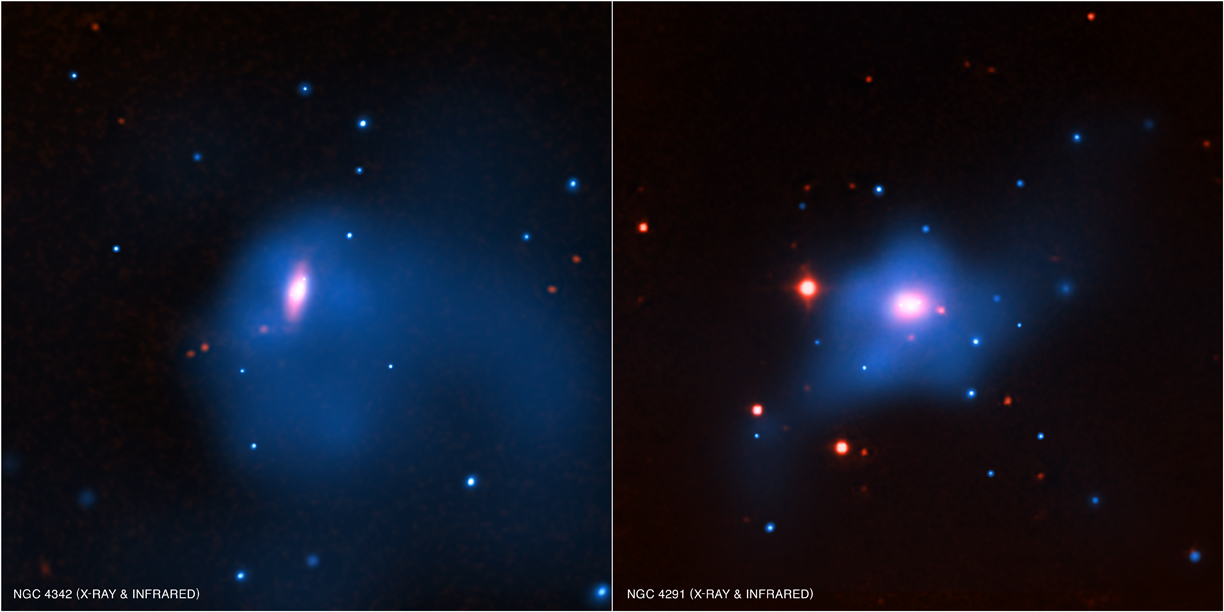NASA | Chandra X-ray Observatory | 2012 June 11
New results based on the two objects shown here are challenging the prevailing ideas as to how supermassive black holes grow in the centers of galaxies. NGC 4342 and NGC 4291, the two galaxies in the study, are nearby in cosmic terms at distances of 75 million and 85 million light years respectively. In these composite images, X-rays from NASA's Chandra X-ray Observatory are colored blue, while infrared data from the 2MASS project are seen in red.
Astronomers had known from previous observations that these galaxies host black holes with unusually large masses compared to the mass contained in the central bulge of stars. To study the dark matter envelopes contained in each galaxy, Chandra was used to examine their hot gas content, which was found to be widespread in both objects.
By analyzing the distribution of the hot gas, researchers were able to test whether the galaxies had "lost weight" through stars being pulled away during a tidal encounter with another galaxy. Estimates of the pressure of the hot gas, which must balance the gravitational pull of all the matter in the galaxy, showed that massive envelopes of dark matter must exist around each galaxy. Since this tidal stripping would have severely depleted the dark matter, which is more loosely tied to the galaxies than the stars, this process is unlikely to have occurred in either galaxy.
The new results using NGC 4342 and NGC 4291 challenge the long-held idea that black holes at the centers of galaxies always grow in tandem with the bulges of stars that surround them. Rather this study suggests that the two supermassive black holes and their evolution are tied more closely to the amount and distribution of dark matter in each galaxy. In this picture the weights of the black hole and the dark matter envelope in these two galaxies are "normal" and the galaxies are underweight because they formed unusually slowly.
Credit: X-ray: NASA/CXC/SAO/A.Bogdan et al; Infrared: 2MASS/UMass/IPAC-Caltech/NASA/NSF
Black Hole Growth Found to be Out of Synch
NASA | CfA | Chandra | 2012 Jun 11
http://asterisk.apod.com/viewtopic.php?t=28786#p177558
Exploring the unusually high black hole-to-bulge mass ratios in NGC4342 and NGC4291:
the asynchronous growth of bulges and black holes - Akos Bogdan et al
- arXiv.org > astro-ph > arXiv:1203.1641 > 07 Mar 2012 (v1), 06 Jun 2012 (v2)
- arXiv.org > astro-ph > arXiv:1203.1642 > 07 Mar 2012 (v1), 06 Jun 2012 (v2)
